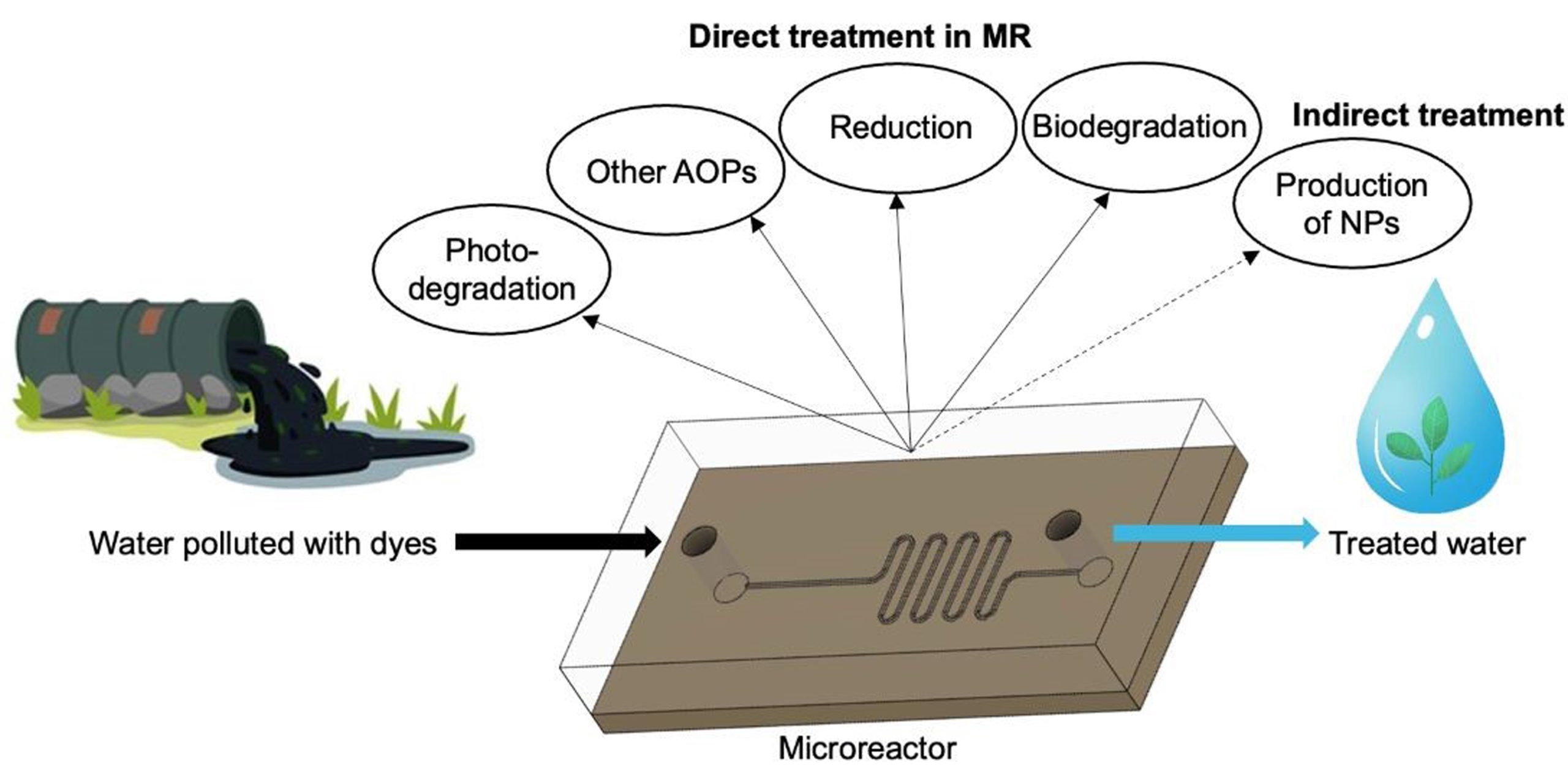In the last decades, there has been a rapid pollution increase connected with various industries, in particular, due to the dye and textile industries, which generate huge amounts of wastewater containing organic dyes. The abatement of dyes in wastewater using microreactors has great potential due to the possibility of intensification of reaction, which offers an emerging prospect in environmental engineering. This paper reviews a rapidly emerging area of microreactors applications in the removal of dyes from polluted water and describes a survey on recent advances in the development of microreactors in this area. With respect to the nature of the treatment technique, the methods can be divided into several categories – Fenton reaction, ozonation, photocatalytic degradation, reductive degradation, biotreatment, and separative sequestration. For example, catalytic photodegradation or Fenton oxidation of dyes can be evaluated as promising techniques. These reactions, for which microfluidic chips, microchannel reactors, or photo-microreactors can be used, advantageously enable efficient and rapid decomposition of dyes in wastewater.
This review study aimed to provide a detailed review of the broad applications of microreactors utilized for removing organic dyes from wastewater. The article was also devoted to practical future applications.
- Kamenická B.*: A critical review on applications of microreactors for the treatment of polluted water with organic dyes. Sci. Total Environ. 2025, 969(March 15), 178897. doi.org/10.1016/j.scitotenv.2025.178897
